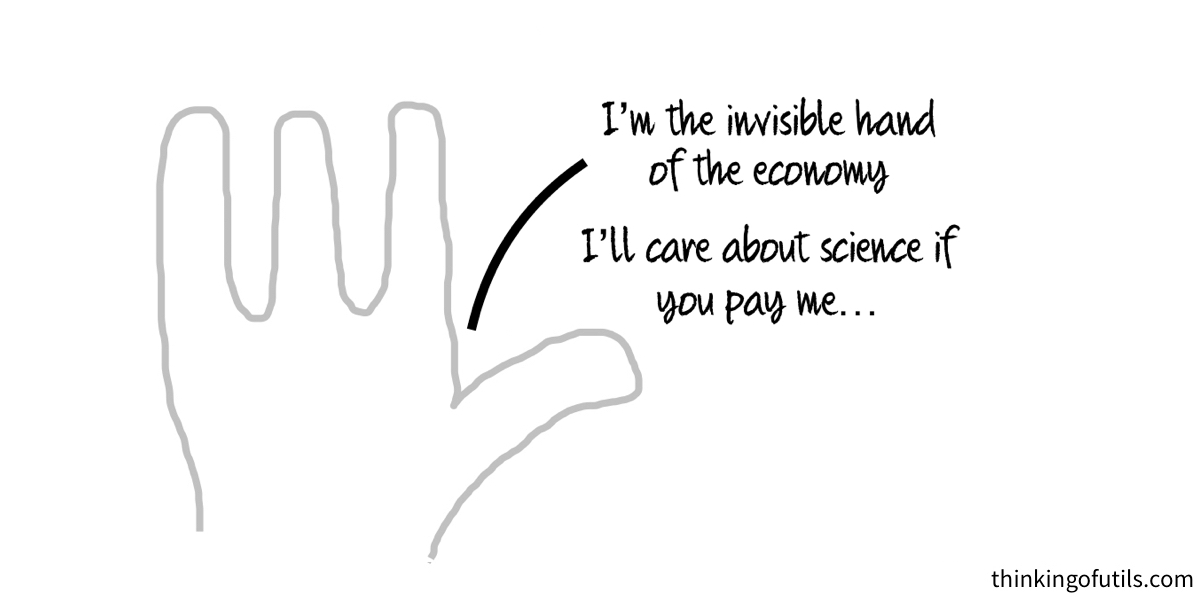For much of human history, people commuted like this:

And the cutting edge of medical science was this:

We’ve progressed beyond these primitive ways of life thanks to science and engineering.
Which is why we spend so much money as a society both educating people about science and engineering and doing more science and engineering. (I will henceforth refer to “science and engineering” simply as “science,” since adding “and engineering” every time would be repetitive for me to type and you to read.)
Tech companies (ranging in fields from information technology to biotechnology) pursue science that is commercializable in the short term. But much science cannot be commercialized in the short term. Governments therefore fund much science at universities and national labs.
We don’t really see “science companies” that pursue this plausibly-commercializable-in-the-long-term science the way we see tech companies that pursue probably-commercializable-in-the-short-term science.
There are many reasons the private sector isn’t poised to do all of our society’s science:
Science can take a long time to pay dividends, and even then they’re uncertain

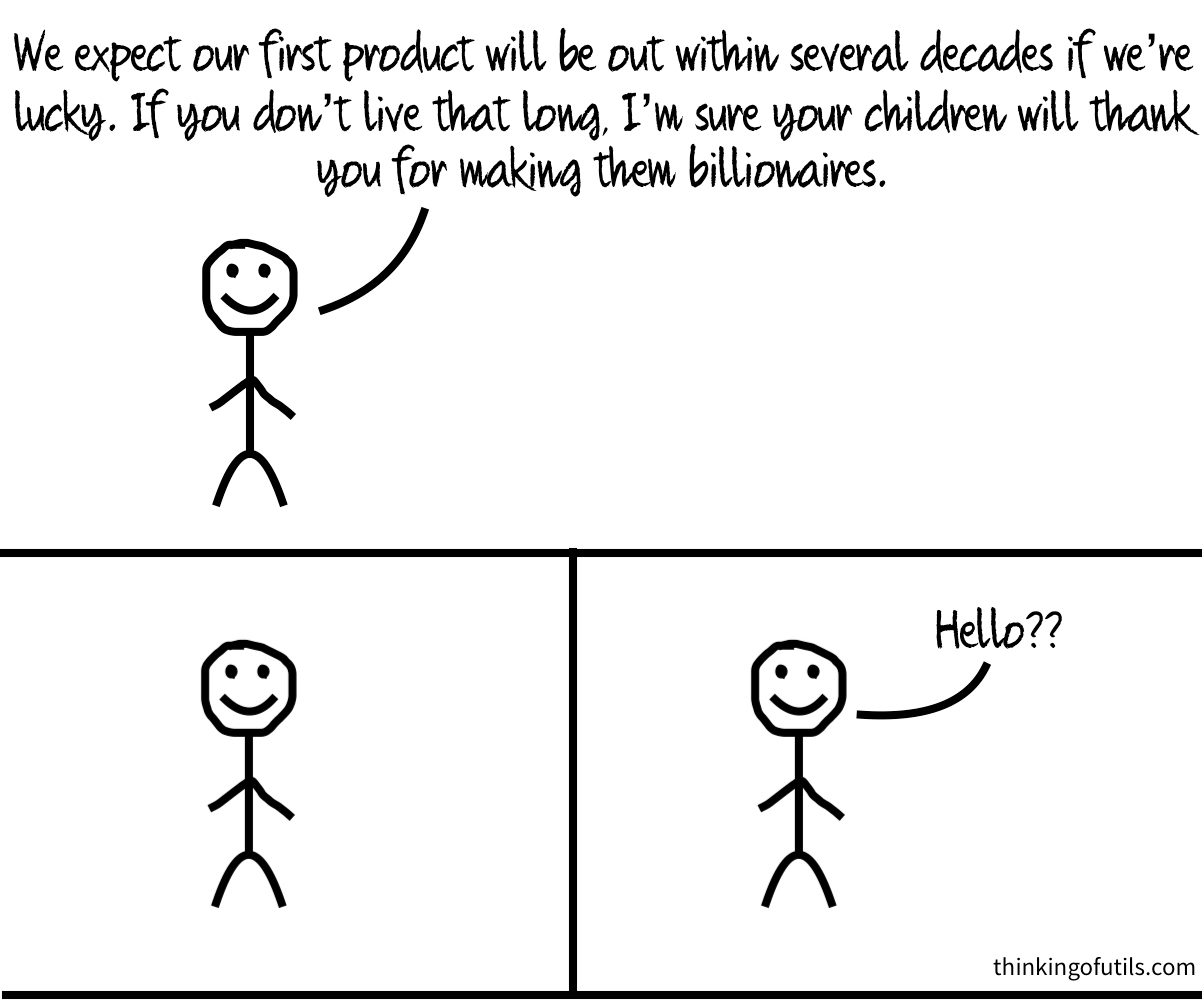
Businesses can’t get all the value from their science
To understand this, we need to understand some basics about how individuals and firms make decisions in an economy (aka “microeconomics”).
First, some terms. A market is any location or industry where buyers and sellers come together to exchange goods – typically in exchange for money. A market is efficient if prices fully reflect all available information. Markets will tend to be efficient when certain assumptions are met – such as people having all available information on the goods being sold, everyone being totally rational in pursuing their interests, and everyone in the market being able to effortlessly negotiate with everyone else.
Any time a market is NOT efficient, we call that a market failure. One major type of market failure is an externality – when a transaction in the market affects someone other than the people who engaged in negotiating the transaction. Externalities can be positive externalities, in which case the “other” person benefits from the transaction, or they can be negative externalities, in which case the other person is harmed by the transaction.
The way an efficient market works is that when a company sells a product, the transaction benefits both the company and the consumer and has minimal effect on anyone else. If I sell you a TV, that’s win-win for us, and no one else cares at all.
But for a negative externality, the transaction instead hurts someone else. You’ve probably heard of fossil fuels having a large negative externality. If I sell you gasoline that you use in your car, we both win, but everyone else loses because pollution.
But the market can also fail the other way, when there’s a positive externality. It sounds weird that a positive externality can be a failure, because me selling you something that benefits some random person is win-win-win. But it still presents a market failure because I won’t sell you as much as I should.
If I’m not sure if the transaction makes me win or lose, you can offer me a better deal so that we both win. If I’m still not sure if it’s a win for me, in a perfectly efficient market the random person would offer me something in exchange so that we all win. But if he can’t do that, then I might not go through with the transaction. The market failure from a positive externality is caused by the fact that those who benefit from the externality are not in a position to negotiate on the transaction going forward (if they instead can and do negotiate on it, then it’s no longer an “externality”).
Economists typically agree that the best way to handle externalities is to tax negative externalities (eg. a tax on carbon emissions) and subsidize positive externalities.
And scientific research represents a classic positive externality.
When businesses do science, it often leads to an additional benefit to society outside of simply the benefit of the resultant products they sell. Even when their products are under patent, other companies can create similar products based on some of the same ideas (think of smartphone companies copying each other). Since businesses can’t capitalize on the positive externalities they provide, their incentive to do science isn’t as large as it “should” be in an efficient market. The real world markets don’t tell businesses to do as much science as we’d like.
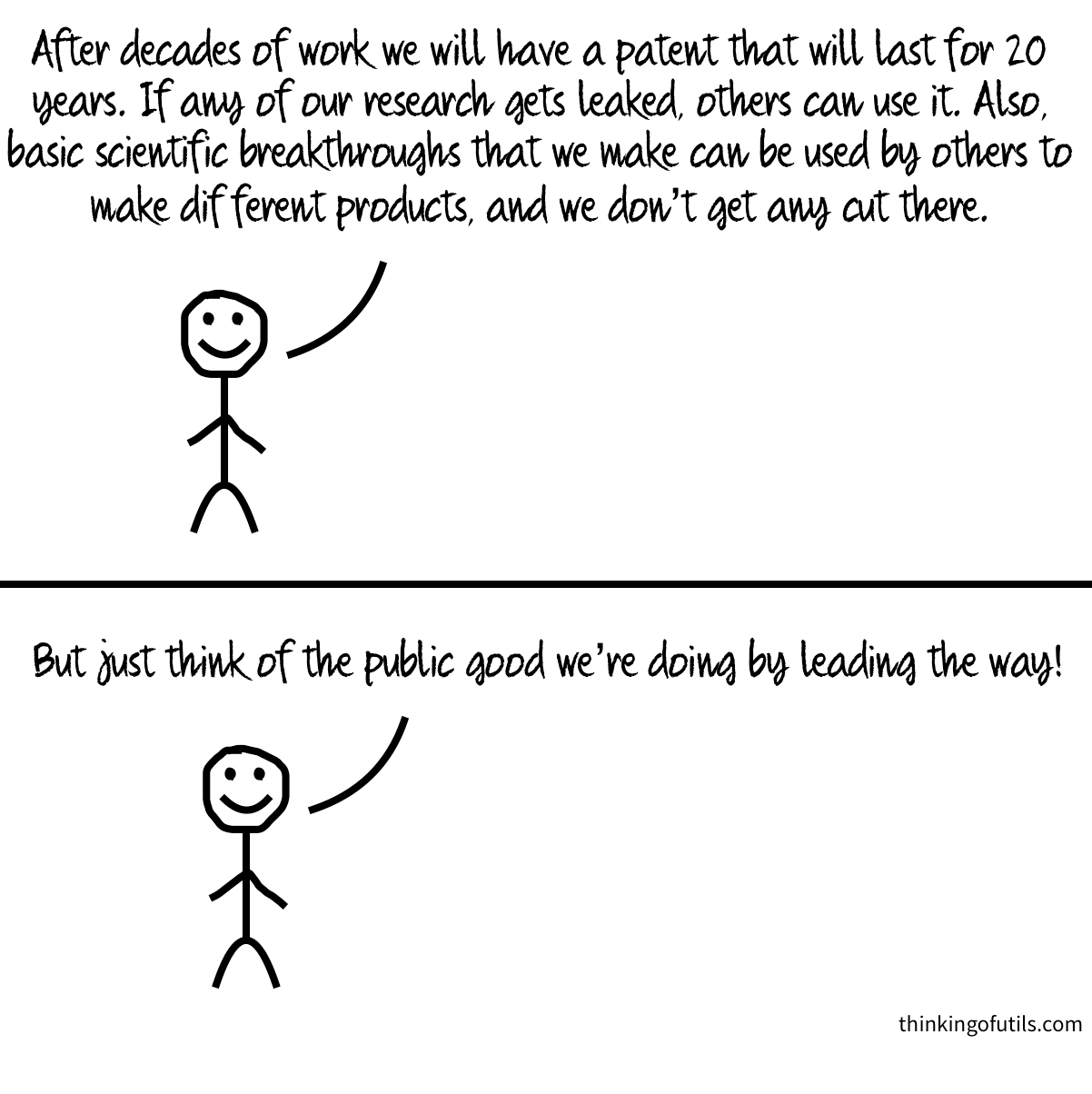
Private sector science is less open
The vast majority of public sector science is published in peer-reviewed scientific journals, not patented or kept as trade secrets. Anyone who reads a journal can use the ideas inside.
Thinking in terms of externalities, this means that if the same research was done in business, it likely won’t have as big a positive externality as it would if done in academia – since there’s less public benefit to science that’s kept secret. Remember, positive externalities represent a market failure because they’re a good thing that businesses won’t do as much of as we’d like. When they take actions that decrease the amount of positive externality, that means less of a good thing.
Since many scientific breakthroughs have been based on advancements in other scientific fields, this openness from science in academia is particularly valuable.
So there are several reasons that the private sector doesn’t pursue all the science that we’d want it to. Luckily, academia addresses these areas.
But there are also some problems with academic science:
For example…
Certain areas of science are facing a “reproducibility crisis”
A reproducibility crisis is where large amounts of published experiments in a field cannot be reproduced. This is a problem because the entire point of science is that it’s supposed to converge on the truth.
One of the main causes of current reproducibility crises is what’s known as “p-hacking.” That’s where a scientist tries to find some correlation in a large dataset by analyzing it in many different ways. Even if there are generally no real correlations between the variables, the scientist is likely to get lucky and find a fluke correlation in the dataset – especially if he has a computer to easily check dozens or more hypotheses.
This process can lead to situations like this:
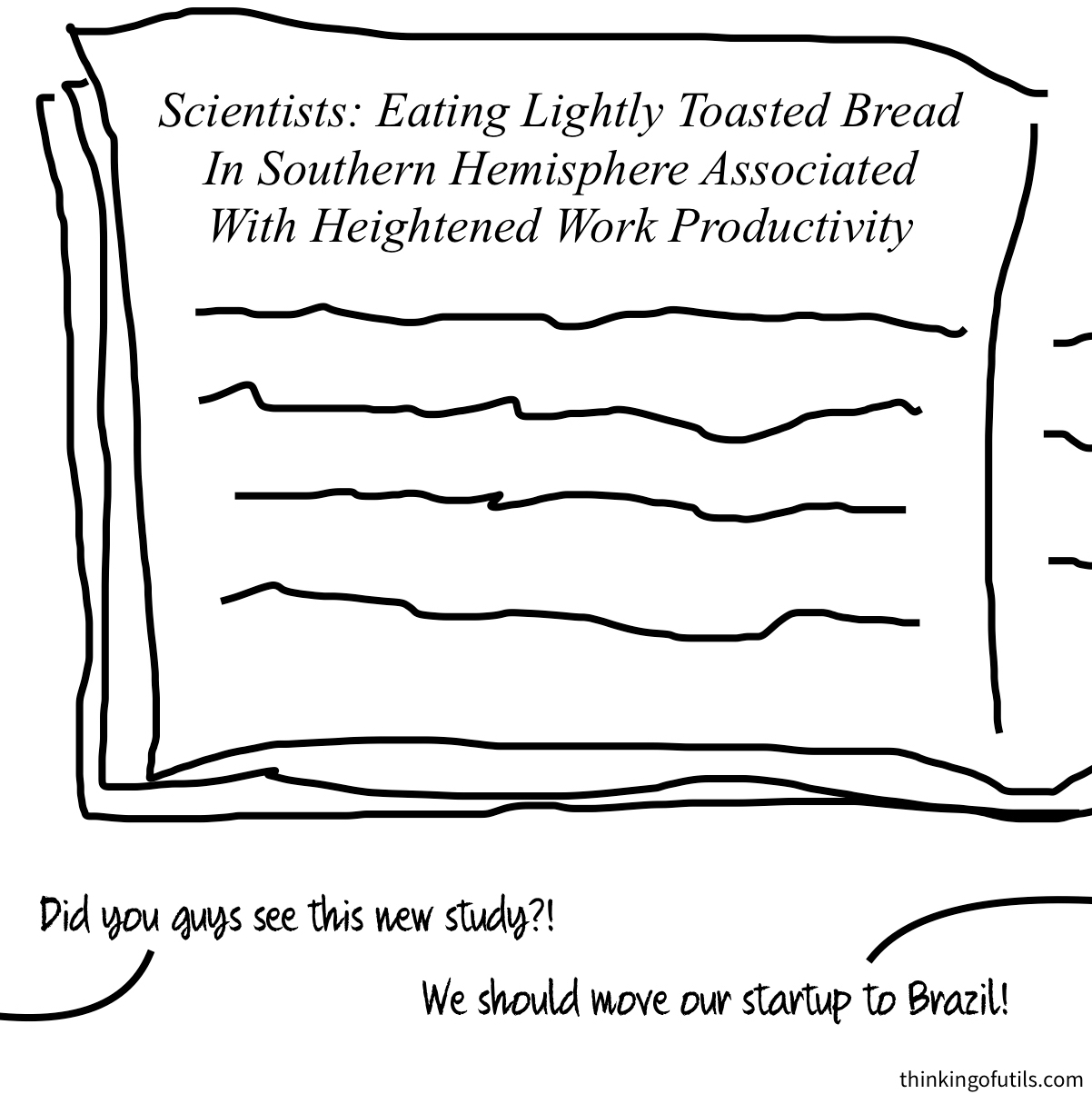
This is basically the same thing as going to a casino, playing every slot machine several times in a row, then when you finally win several consecutive rounds on one you exclaim, “Aha! This is a winning slot machine!”
If you’re wondering why scientists haven’t invented statistical tools to beat p-hacking, the reason is: they have (such as raising the burden of proof the more hypotheses you test for). And many scientists use these statistical tools. But the career incentives to use them isn’t as high as it should be, and many scientists – off in their own labs working semi-alone – don’t know about these tools.
And while academic scientists spend a lot of their time working on research, they also spend a lot on other various activities.
Academics spend a lot of time writing grant applications
Imagine if we took our most promising young scientists and we put them through rigorous programs of classes and research. That would make sense. Then as they became more skilled and we filtered down the pool even more we had them focus more on research. Again, this makes sense. Then finally when they had learned enough that we felt they were really well qualified, and they had proven themselves to the scientific community – we told them to… spend less time on research and instead spend a lot of time writing applications for grant money.
Something about that feels a little off.
And yet, a successful scientific career in academia typically looks like this:
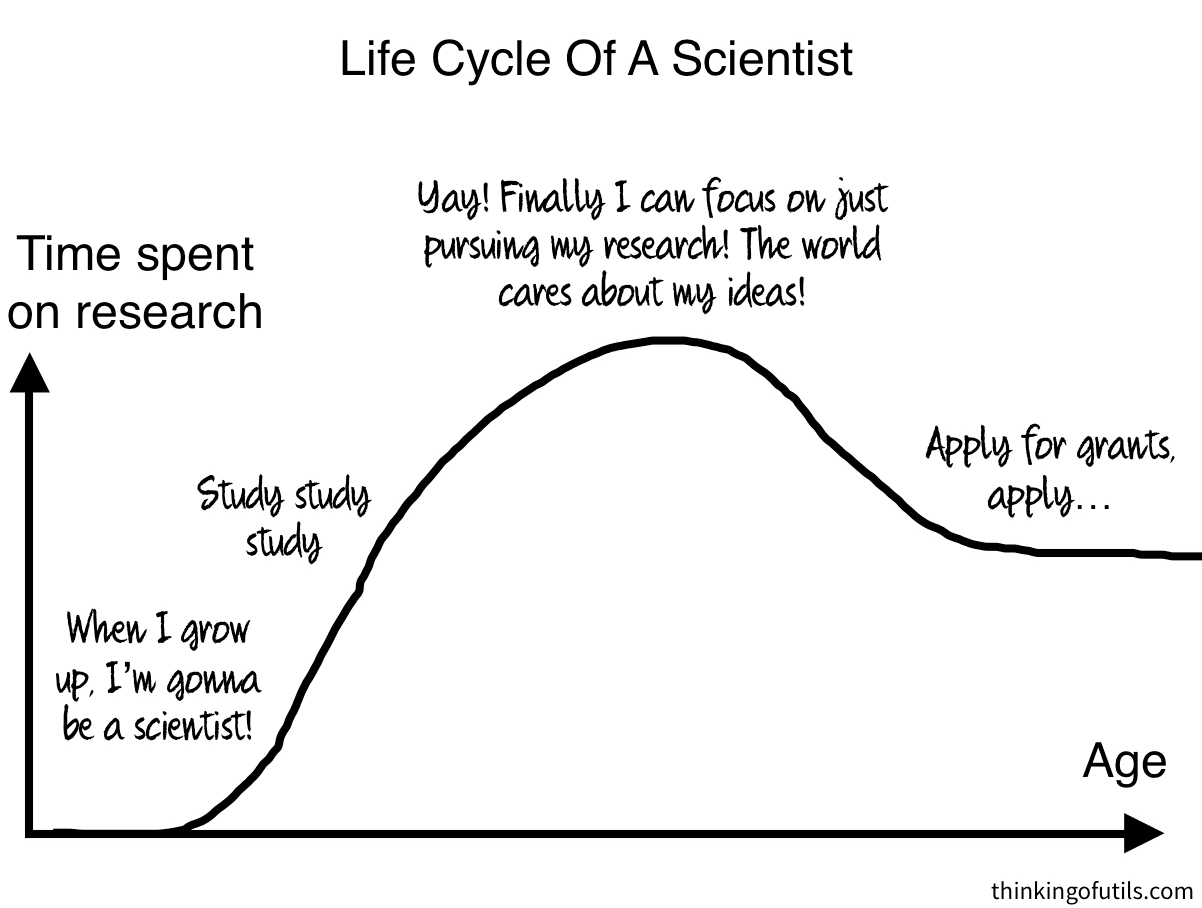
One easy solution to this problem would be to increase science funding drastically so it wasn’t so damn competitive (but that’s a topic for another blog post). Regardless, this is one drawback of academia that generally doesn’t apply to the business world.
—
Now, the scientific community is aware of these issues and others, and there are pushes to fix them. But the overarching problem is not a series of unrelated issues that need to be fixed one at a time. The problem is one of misaligned incentives and screening pressures.
And without feedback from consumers (in the form of money) creating Darwinian competition for best practices, or the ability of start-ups to “disrupt” academia and introduce new practices, the scientific community doesn’t automatically self-correct the way markets do.
What if we created scientific progress markets?
The shortcomings of science in business and in academia complement each other. Business doesn’t have good incentives for pursuing not-soon-to-be-commercializable science, while academia misses out on the efficiency benefits of the market.
We could combine the benefits of business and of academia by creating markets for scientific progress.
The way this could work is the government could allocate large sums of money to prizes for solving certain scientific challenges.
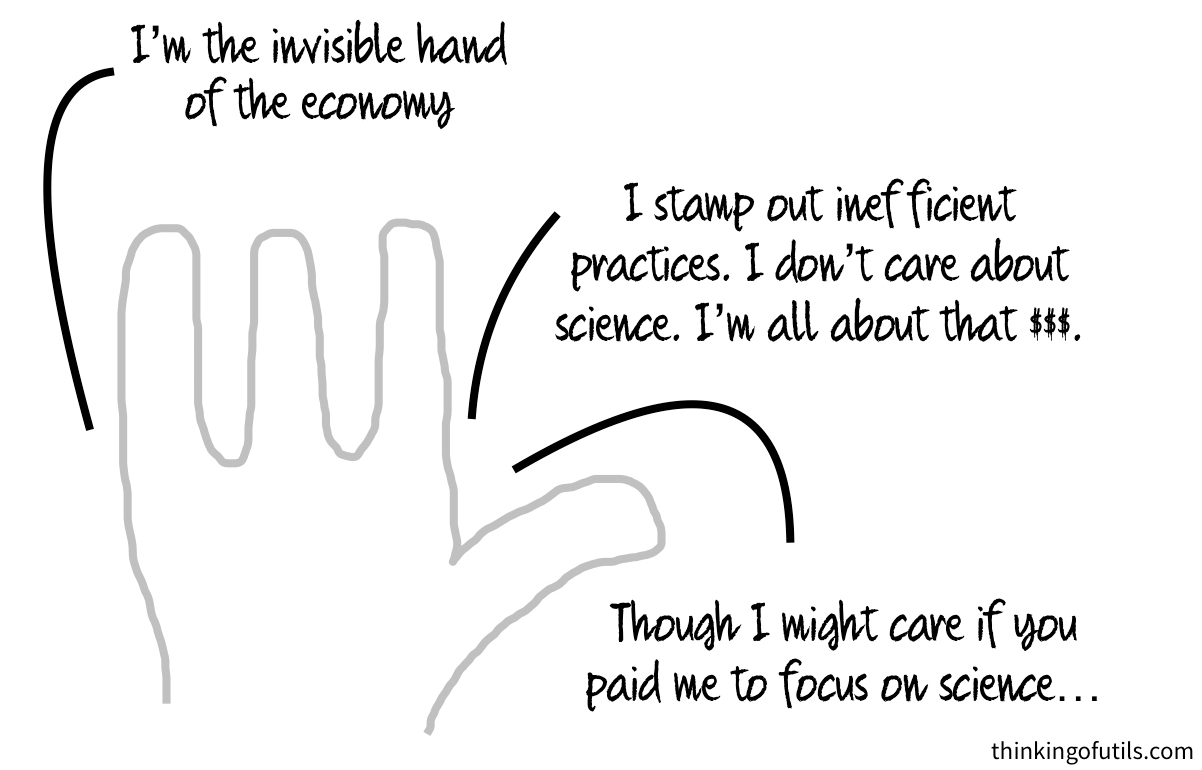
For example, prizes could be awarded for improving brain-machine interfaces (BMIs) in the following manner. Prizes could be set for the first group to develop a BMI for use in animals’ brains that can simultaneously record with certain accuracy from 1,000 neurons, 10,000 neurons, and 100,000 neurons. Currently, the state of the art in this area is recording from 500 neurons simultaneously, and that number is doubling only every 7 years or so.
Extensions of BMI technology would have applications in everything from treatments and cures for mental illnesses, to virtual reality, to human cognitive augmentation, to artificial intelligence. Yet, with a few notable exceptions, the private sector is not yet pursuing this field.
Prizes could encourage the private sector to attack this problem.
The key is that the prize money would have to go to the owner of the venture that made the discovery (the stockholders of the company). And the money would further need to be simply revenue – not more research money with strings attached.
This would create an incentive for creating ventures that pursue science – science companies.
While this idea might sound crazy, prizes have been used to incentive science before. Most famously:
The X-Prize
The X-Prize Foundation was founded by Peter Diamandis. When Peter was a child, he became interested in space. Since then, his career aspiration has been “to be an asteroid miner” (yes, that’s an actual quote).
But that’s not a real thing. So when Peter grew up, he decided he’d make it a real thing. The first step was to speed up the commercialization of space. He did this with the Ansari X-Prize.
The Ansari X-Prize was a $10M (!!) prize for the first non-government organization to launch a reusable manned spacecraft into space twice in two weeks. 26 teams competed for the prize, spending a total of over $100M, and the prize was claimed in 2004 by Mojave Aerospace Ventures:

Most importantly, the prize created competition where the best team won.
The X-Prize Foundation subsequently hosted other scientific prizes – ranging from medicine to education.
And if you’re wondering what ever happened to Peter’s dream – Peter has since founded a new company called Planetary Resources that has an explicit goal to “expand the economy into space” by asteroid mining.
Government Science Prizes
The X-Prize was large enough to spur many times its amount in investments. But if we really want the market to pursue this sort of science, we need enough prizes worth enough money that big companies tackle them – the same way that Google and Facebook attack problems of search and social media. Imagine a Google or Facebook who’s one goal was the pursuit of scientific research. Now imagine several companies like that, competing with each other, where the best survive and grow.
It would need to be potentially profitable to have a business model of revenue from these prizes.
The US Government spends about $60 billion per year on science, through various agencies (NSF, NIH, NASA, DOE, etc). Matching that money with comparable amounts of scientific prize money would be amazing. But even one tenth of this would be enough of an incentive for major scientific advancement.
Apple and Google currently spend several billion dollars per year on R&D. If we want science companies to spend similar amounts on R&D that the tech behemoths do, the government would have to put up at least that amount in prizes.
Obviously, science companies would devote a much larger portion of their money to R&D than even our current tech companies do, since that’s basically all they’d do (they wouldn’t need a product to sell).
And another benefit of scientific prizes is they could incentivize very high-risk high-reward science. Many scientists think this is the most impactful science, but the government is currently hesitant to throw taxpayer money at something that might not pay off.
The great thing about prizes is the money only costs taxpayers anything if someone actually meets the criteria. So the government would be free to set a theoretical prize of $10B for a proof-of-concept of cold fusion – likely no one would claim it, but even better if they did!
And finally…
These Prizes Would Complement Academia Well
Currently, academia is filled with a plethora of research groups pursuing various projects. It would be near impossible to have enough prizes to incentivize this level of diversity of approaches in science companies. Nor is it necessarily a good idea to put all our eggs in the baskets of the handful of science companies that I assume would come to dominate the space.
Academia would still have an advantage in terms of having many more groups trying many different approaches.
It also would be quite difficult to incentivize exploratory science – where results can be truly unexpected yet still quite impactful. Here again, academia would have the upper hand.
Replacing funding for academia with scientific prizes would be a mistake.
Instead, these prizes would best be used in addition to the funding now given to academia, and could accelerate the handoff of science from academia to the private sector.
Currently, the cutting edge of science is typically performed in academia. But the road traversing from academia to the private sector is a winding one, with many dead ends. It can take a while for science to progress in academia long enough for tech companies to pick it up. And much promising research never even makes it that far, as academics (especially the most innovative) are usually more attracted to making novel discoveries than improving on someone else’s process.
With scientific prizes added to the mix, the picture would be different. Academia would probably still make most of the cutting edge scientific advances. But then science companies – incentivized through prizes – could take the science forward until it was close enough to commercialization that tech companies picked it up for creating products. This faster pace of progress would in turn give more advanced tools to scientists in academia, allowing for further discoveries, and so on.
—
Enjoy this post?
Join the Thinking of Utils newsletter and get new posts emailed directly to you:

